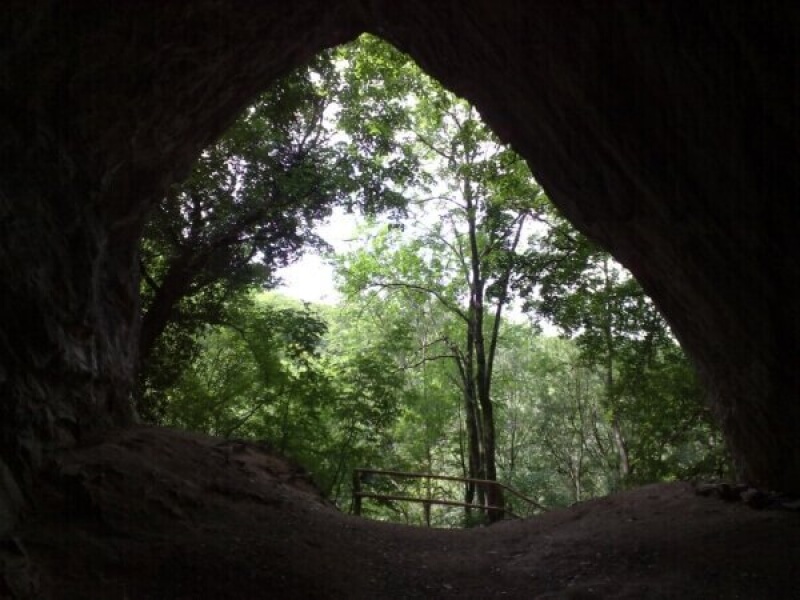The Istállós Rock Cave located on the second highest peak of the Bükk Mountain at 609 m. It can be reached by foot from the Gloriett Glade on a steep serpentine footpath. The cross-section of the cave forms a triangle, it is 45 m deep, 9-10 m wide, with a layer thickness of 2 meters. It is a place of archaeological significance, therefore in 1944 it was pronounced to be a protected, in 1982 to be a specially protected site. The huge, triangle-shaped entrance was formed along a geological fault. Behind the entrance one spacious area can be found. In the historical times the cave functioned as a stable for a long time, but based on researches even earlier it did not serve as an accommodation, but was a sacrificial site.
Archaeological excavation:
In 1911, Roskó Pál forest officer from Répáshuta recommended the excavation of the cave to the archaeologists. The first test excavation was led by Hillebrand Jenő prehistoric archaeologist in 1912. Besides the stone tools and ceramic remains, the collarbone of a three years old child was found as well, so until 1925, they returned to the site five times, where they found more stone and bone tools. In 1927, Saád Andor and Megay Géza continued the work. The stove weighing almost 80 tons was discovered during this period, which was taken to the archaeological department of the National Museum. In the fire pit, among the ceramic remains of the Bükk culture, jewelry made of sea shells and broken, burnt bones of twenty-seven young adults were also found. The more than two hundred bones are an unequalled proof of ritual cannibalism. After this in 1929 Kadić Ottokár and in 1938 Győrffyné Mottl Mária excavated the cave. The systematic, detailed exploration of the cave was led by Vértes László from 1947. Based on the layering of the filling and the age indicating animal remains found in the layers they discovered the story of the cave, determined the age of the three culture layers and the characteristics of the group(s) of people who lived at that time. The fact that the 66 species fauna found in the Ice Age layers is the richest from Europe’s Aurignacian Period excavations makes the Istállós Rock Cave even more significant; from its microfauna 3 new mammal and 20 new bird species were documented. The two pierced, bone amulets that can be hanged on a string are among the oldest jewelries of the world. The three skulls found in the end of the cave are among the oldest sites showing cave bear (Ursus speleus) skull burial (skull deposition). The spearheads found in the 40-44000 old lower culture layer are among the world’s oldest Aurignacian tools. According to our current knowledge, the small bone tips found here are the world’s oldest traces of bow usage. The 66 species fauna found in the Pleistocene (Ice Age) layers of the Istállós Rock Cave is the richest from Europe’s Aurignacian Period excavations, and another interesting fact is that from its microfauna 3 new mammal and 20 (!) new bird species were documented for the first time in the world. The bones of the following Ice Age animals were found during the archaeological excavations: reindeer, cave bear, ancient bison, woolly mammoth, cave lion, wolf, cave hyena, mountain goat.

























